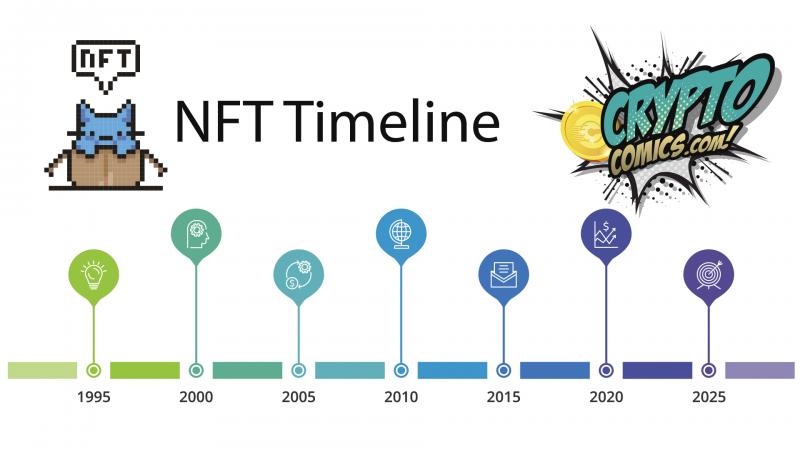by Matthew Russell - Posted 2 years ago

Welcome my CryptoComics Compatriots. Have you heard of NFTs? If you’re here, then I’m assuming the answer is yes. These digital assets have been making waves in the art world and beyond. Check out this article to learn more about their history and how they're being used today.
The history of Non-Fungible Tokens (NFTs) can be traced back to the early days of the internet, with the first concept of digital ownership appearing in the form of digital art and collectibles in the late 1990s.
However, it wasn't until the invention of blockchain technology and the emergence of Ethereum in 2015 that the true potential of NFTs as a means of ownership and authenticity verification for digital assets began to be realized.
The first NFTs were created on the Ethereum blockchain in 2017, with the launch of the CryptoKitties game, which allowed players to buy, sell, and breed virtual cats.
This simple concept quickly caught on, and soon other digital collectibles such as CryptoPunks and CryptoCollectibles followed. These early NFTs were primarily used as collectibles and for gaming, but it wasn't long before the potential uses of NFTs began to expand.
In 2018, the first NFT artworks began to appear on the Ethereum blockchain, with artists such as Beeple and Mike Winkelmann, selling their digital creations for hundreds of thousands of dollars. This marked the beginning of the NFT art market, which has since grown to become a significant sector within the larger cryptocurrency and blockchain industry.
The following years saw an explosion in the popularity of NFTs, with a wide range of digital assets, including virtual real estate, music, videos, and more being tokenized and sold as NFTs. The technology behind NFTs also advanced, with new standards such as ERC-1155 and ERC-721 being developed to improve the functionality and flexibility of NFTs.
In 2021, NFTs reached mainstream consciousness with record-breaking sales of digital artworks, such as Beeple's "Everydays: The First 5000 Days" selling at Christie's auction for $69 million, making it one of the most expensive digital artwork ever sold.
NFTs are a new kind of digital asset (we like to call our comics tokens) that represents the ownership of a unique item. They can be used to represent artworks, music, videos, virtual real estate and more, they were first proposed in the late 1990s.
It wasn't until the invention of blockchain technology, specifically Ethereum, that the true potential of NFTs as a means of ownership and authenticity verification for digital assets began to be realized. The market of NFTs is still in its infancy but it is growing rapidly and has reached mainstream consciousness in 2021.